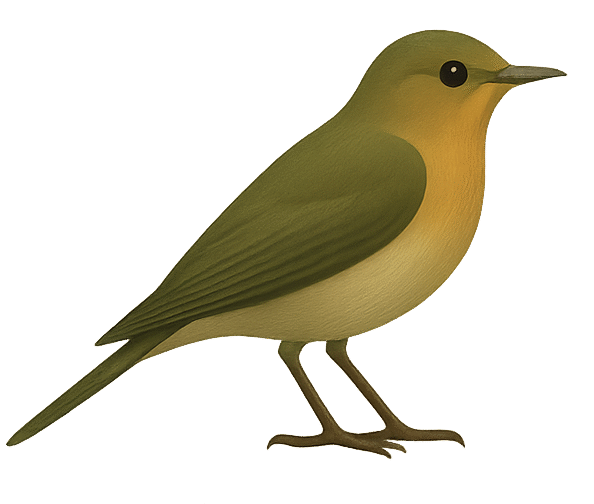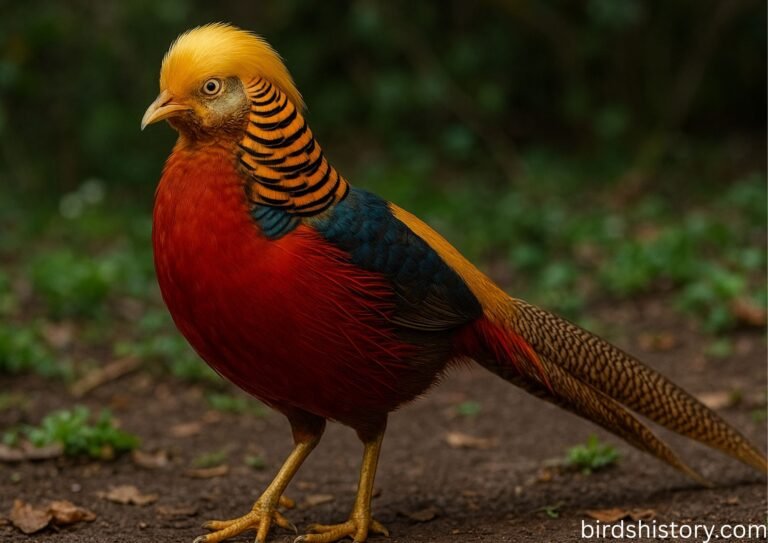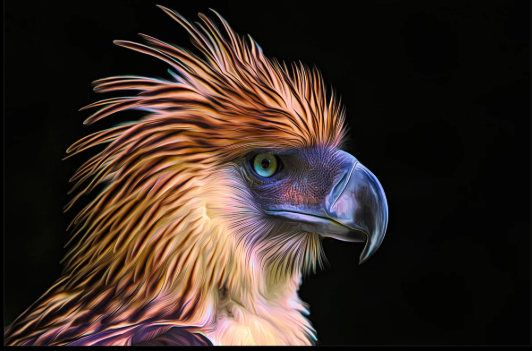Kagu Bird: New Caledonia’s Mysterious Forest Guardian
The Kagu is one of the world’s most unusual and captivating birds. Found only on the remote island of New Caledonia in the South Pacific, this rare bird has puzzled scientists and enchanted bird lovers for centuries. With its ghostly pale feathers, bright orange legs, and haunting calls that echo through the forest, the Kagu feels like a living relic from another time.
One of the most surprising facts about the Kagu is that it is flightless—despite having large wings, it doesn’t use them to fly. Instead, the wings are spread dramatically during courtship displays or when threatened, showing off striking black-and-white patterns. This unique lifestyle, combined with its restricted range, makes the Kagu one of the rarest and most vulnerable birds on the planet.
In this article, we’ll explore everything about the Kagu: its biology, behavior, cultural significance, threats, and the urgent conservation efforts working to protect it.
Taxonomy / Classification
The Kagu is so distinct that scientists gave it its own family, making it unlike any other bird on Earth.
- Common Name: Kagu
- Scientific Name: Rhynochetos jubatus
- Family: Rhynochetidae (sole member)
- Order: Eurypygiformes
- Class: Aves
Due to its distinctive nature, the Kagu is frequently called a “living fossil,” as it represents a unique lineage that has been isolated for millions of years.
Also read: /the-resplendent-quetzal/
Physical Description
The Kagu has an appearance that makes it instantly recognizable:
- Size: About 55 cm (21–22 inches) tall.
- Weight: Around 700–1,000 grams (1.5–2.2 pounds).
- The Kagu’s feathers are a blend of silvery-gray and pale bluish-white, which provides excellent camouflage within the misty forests of New Caledonia.
- The bird has a long, graceful crest of feathers on its head that it lifts up when it’s excited or feels threatened.
- Wings: Large and rounded, with bold black-and-white stripes visible during displays.
- Legs: Long and bright orange-red, adapted for walking and digging.
- Beak: Sharp, red-orange, ideal for probing soil and leaf litter.
- Sexual Dimorphism: Males and females look almost identical, making them difficult to distinguish in the field.
The bird’s ghostly appearance and dramatic wing and crest displays contribute to its mysterious aura.
Habitat and Range
The Kagu is an endemic species, meaning it lives exclusively in New Caledonia.
- Continent: Oceania
- Country: New Caledonia (a French territory)
- Preferred Environment: Dense rainforests, montane forests, and humid valleys.
- Altitude Range: From lowland forests up to 1,400 meters (4,600 feet).
- Migration: The Kagu is a non-migratory bird, living its entire life within a relatively small territory.
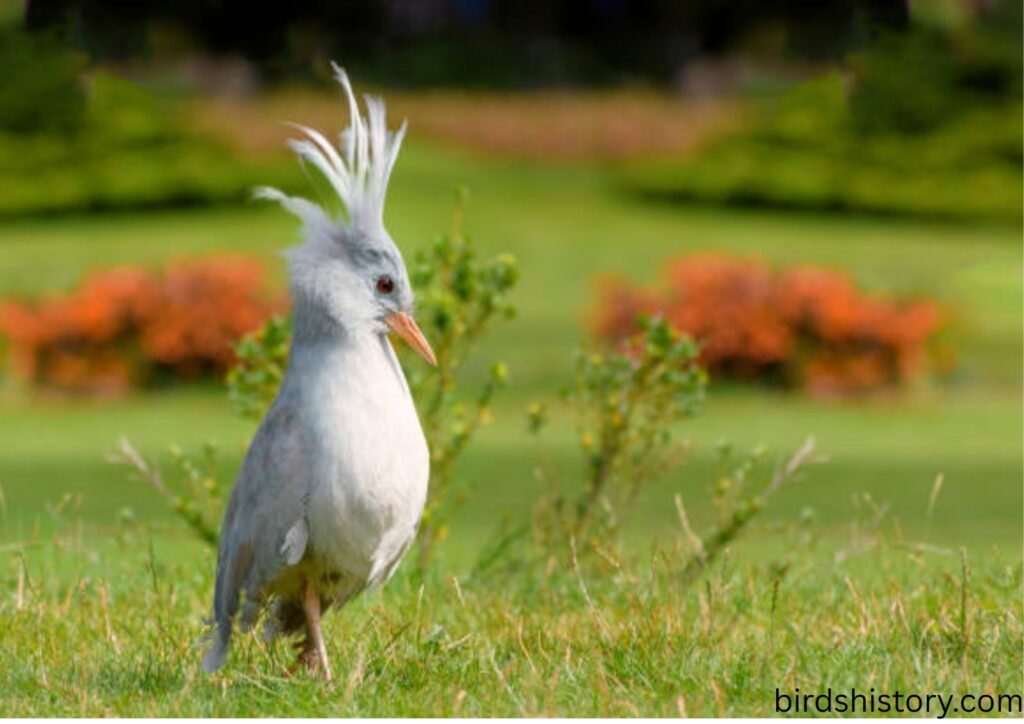
The isolation of New Caledonia and the island’s rich biodiversity allowed the Kagu to evolve without natural mammalian predators—until humans and their introduced species arrived.
Diet and Feeding Habits
The Kagu is a carnivorous forager, using its sharp beak and strong legs to hunt on the forest floor.
- Primary Diet: Insects, worms, snails, and small reptiles.
- Secondary Diet: Occasionally small amphibians and other invertebrates.
- Foraging Method:
- Uses its bill to probe soil, leaf litter, and decaying wood.
- Scratches the ground with its feet to uncover hidden prey.
- Feeding Behavior: Typically hunts in the early morning or late afternoon when prey is most active.
By feeding on insects and invertebrates, the Kagu plays an important role in maintaining the health of New Caledonia’s forest ecosystems.
Behavior and Lifestyle
The Kagu is as unique in its behavior as it is in appearance.
- Activity: Mostly terrestrial and diurnal (active during the day).
- Flight Style: Cannot fly, but uses wings for balance, displays, and short glides downhill.
- Social Structure: Pairs mate for life, and family groups defend territories together.
- Calls: Loud, haunting “howls” or “barks” that echo through the forest, often performed in duets by pairs.
- Courtship Rituals: Males display by raising their crest and spreading wings to show contrasting patterns, often combined with calls.
This bird’s haunting vocalizations are so distinctive that locals call it the “ghost of the forest.”
Reproduction and Lifespan
The Kagu’s slow and limited reproductive rate makes the species more vulnerable.
- Breeding Season: Mainly June to September, though may vary slightly.
- Nesting: Simple nests made of leaves placed directly on the ground.
- Clutch Size: Only one egg per year.
- Eggs: Pale gray or brown with dark blotches for camouflage.
- Incubation: Lasts around 33–37 days, shared by both parents.
- Chick Development: Young remain dependent for several months.
- Lifespan: Estimated at 15–20 years in the wild, and up to 30 years in captivity.
The single-egg strategy means population growth is extremely slow, making conservation even more urgent.
Predators and Threats
The Kagu evolved without mammalian predators, making it extremely vulnerable when such predators were introduced.
- Natural Predators: Few, since New Caledonia originally lacked mammals.
- Introduced Threats:
- Dogs, cats, and rats prey on eggs, chicks, and even adult birds.
- Pigs disturb nests and feeding grounds.
- Environmental Threats:
- Deforestation for logging and agriculture.
- Mining activities in New Caledonia that destroy habitats.
- Human Impact: Hunting in the past also reduced populations, though it is now illegal.
Conservation Status
The Kagu is classified as Endangered by the International Union for Conservation of Nature (IUCN).
- Population Estimate: Between 250 and 1,000 individuals remain in the wild.
- Major Threats: Habitat destruction and introduced predators.
- Conservation Measures:
- Predator control programs (especially dog and cat management).
- Creation of reserves such as Parc Provincial de la Rivière Bleue, which protects one of the largest Kagu populations.
- Breeding and reintroduction programs.
- Environmental education campaigns in New Caledonia to involve local communities.
While numbers remain low, conservation programs have stabilized populations in some areas, offering hope for the future.
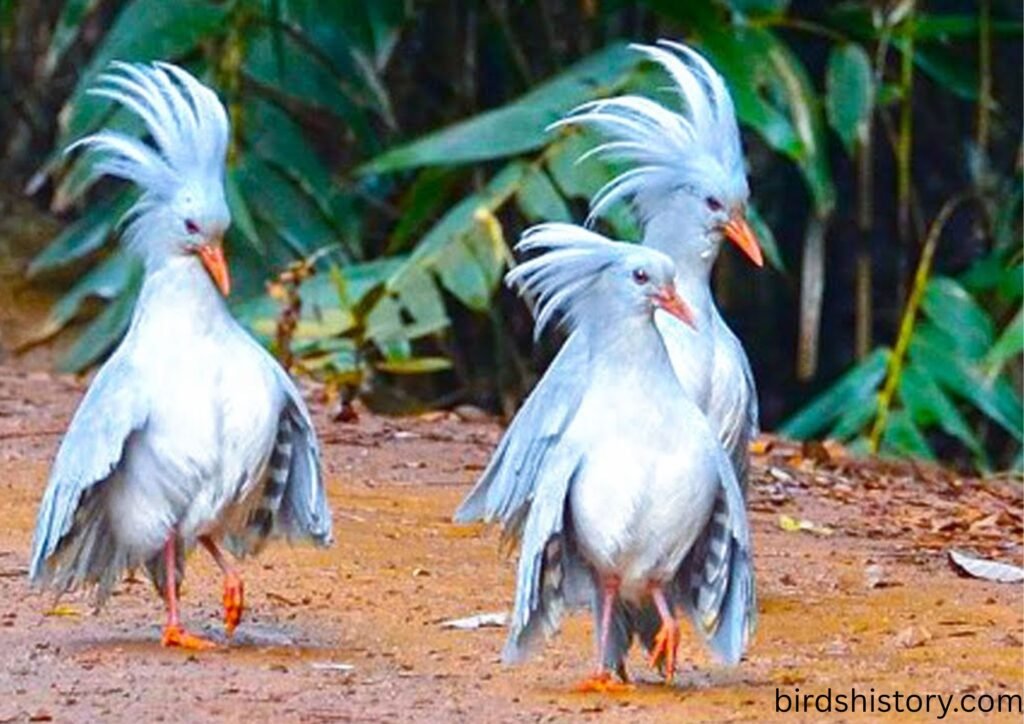
Interesting Facts
- The Kagu is sometimes called the “ghost bird” because of its pale plumage and eerie calls.
- It is one of the few flightless birds that is not a member of the ratite group (like ostriches and kiwis).
- The bird has powder down feathers, which release a fine dust to help waterproof and maintain its plumage.
- Kagus are known to “sunbathe” by spreading their wings to expose their feathers to the sun’s rays.
- Their haunting duet calls can be heard up to 1 kilometer away in dense forest.
- The Kagu has a long crest that it raises in excitement or aggression, similar to a cockatoo.
- The Kagu holds the status of New Caledonia’s national bird, and its image is featured on the country’s money and postage stamps.
- Fossil evidence suggests the Kagu once had relatives across the Pacific, but today it is the only survivor of its lineage.
- Despite being flightless, it is an excellent runner and can move quickly through the underbrush.
- Locals traditionally considered the Kagu a sacred bird, and it plays a role in cultural identity.
Conclusion
The Kagu is considered one of the world’s most unique and rare birds. With its ghostly gray feathers, haunting calls, and striking crest, it represents both the mystery of evolution and the fragility of island ecosystems. Restricted to New Caledonia and endangered by introduced predators and habitat loss, the Kagu’s survival hangs in the balance.
Protecting this remarkable bird means protecting the forests of New Caledonia and acknowledging the delicate relationship between people, wildlife, and the land they share. The Kagu’s story reminds us why every species—no matter how rare—deserves a chance to thrive.
FAQs About the Kagu
1. What is the Kagu bird?
The Kagu is a flightless bird found only in New Caledonia, known for its pale feathers and haunting calls.
2. Where does the Kagu live?
It lives in New Caledonia’s dense rainforests and montane forests.
3. Can the Kagu fly?
No, it is flightless, though it can use its wings for displays and short glides.
4. How big is the Kagu?
It is about 55 cm (22 inches) tall and weighs around 1–2 pounds.
5. What does the Kagu eat?
It eats insects, worms, snails, and small reptiles, hunting on the forest floor.
6. How many Kagus are left?
Fewer than 1,000 individuals remain in the wild.
7. Why is the Kagu endangered?
Habitat loss and predation by introduced animals like dogs, cats, and rats.
8. What is special about the Kagu’s feathers?
They secrete a dust called “powder down” that helps keep their feathers in good condition and makes them waterproof.
9. Does the Kagu have cultural significance?
Yes, it is a national symbol of New Caledonia and appears on local currency.
10. How long does the Kagu live?
It can live 15–20 years in the wild and up to 30 years in captivity.
